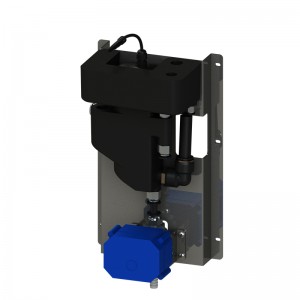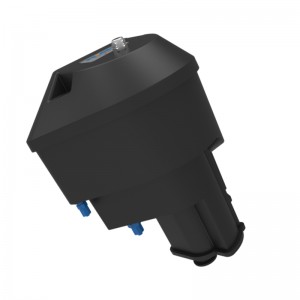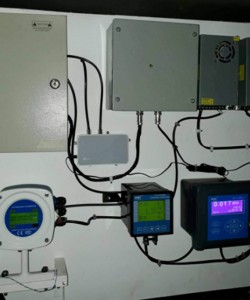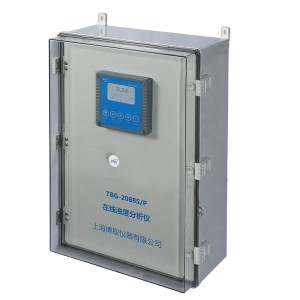Generally speaking, turbidity refers to the turbidity of water. Specifically, it means that the water body contains suspended matter, and these
suspended matters will be hindered when light passes through. This degree of obstruction is called turbidity value. Suspended solids and colloids
such as soil, silt, fine organic matter, inorganic matter, and plankton in the water can make the water turbid and present a certain turbidity.
According to the water quality analysis, the turbidity formed by 1 mg SiO2 in 1L water is one Standard turbidity unit, referred to as 1 degree.
Generally, the higher the turbidity, the cloudier the solution.
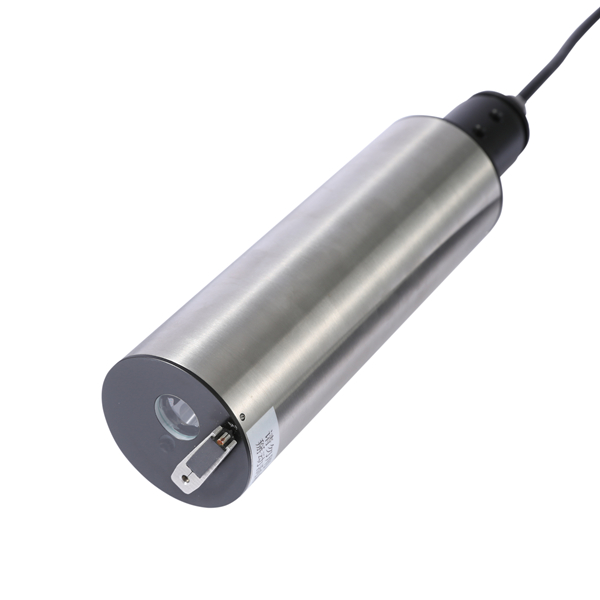
Measuring principle of turbidity:
A beam of parallel light propagates in a transparent liquid. If there are no suspended particles in the liquid, the beam will not change direction when traveling
in a straight line; or not). This forms what is known as scattered light. The more particles (higher turbidity) the more severe the scattering of light. Turbidity
is measured with an instrument called a nephelometer. A nephelometer sends light through a section of sample and measures how much light is scattered by
particles in the water at a 90° angle to the incident light. This scattered light measurement method is called scattering method. Any true turbidity must be
measured this way. The turbidity meter is suitable for both field and laboratory measurements, as well as continuous monitoring around the clock. Turbidimeters
can be set up to sound an alarm when measured turbidity values exceed safety standards.
Measurement methods:
1. Turbidity can be measured by nephelometric method or scattered light method. In China, turbidimetry is generally used for determination. The water sample is compared
with the turbidity standard solution prepared with kaolin, and the turbidity is not high, and it is stipulated that 1 mg of silicon dioxide in one liter of distilled water is
a turbidity unit. Fordifferent measurement methods or different standard substances, the obtained turbidity measurement values are not necessarily consistent. The level of
turbidity generally cannot directly explain the degree of pollution of water quality, but the increase of turbidity caused by human life and industrial sewage indicates
that the water quality has deteriorated.
2. Turbidity can also be measured with a turbidimeter. A nephelometer sends light through a section of sample and measures how much light is scattered by particles in the water
at a 90° angle to the incident light. This scattered light measurement method is called scattering method. Any true turbidity must be measured this way. The turbidity meter is
suitable for both field and laboratory measurements, as well as continuous monitoring around the clock. Turbidimeters can be set up to sound an alarm when measured
turbidity values exceed safety standards.
3. Turbidity can also be estimated by using a colorimeter or a spectrophotometer to measure the degree of attenuation of transmitted light intensity caused by the obstruction
of particles in the sample. However, regulatory agencies do not recognize the validity of this method, nor does it meet the American Public Health Association's definition of
turbidity.
4. The light transmittance measurement is easily affected by interference such as color absorption or particle absorption. Furthermore, there was no correlation between light transmittance and results measured with scattered light measurements. Nonetheless, at some point colorimeter and spectrophotometer measurements can be used to determine the magnitude of turbidity in water treatment systems or process control.
Post time: Nov-18-2022

